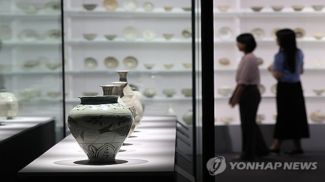BEIJING, 14 May (BelTA - Xinhua). - Many Chinese museums, art galleries and other cultural and art institutions have ramped up efforts to leverage digital technologies for better development.
Based on their characteristic resources, they have rolled out online exhibitions, courses, and other online services, allowing netizens to take virtual tours and enjoy splendid art feasts online.
Zhejiang Provincial Museum launched an online exhibition that showcased more than 1,000 images of ancient Chinese women from 32 museums. Meanwhile, it carried out an online interaction activity, attracting active participation of netizens.
“You can also take part in our photography collection activity during this online exhibition. We are looking forward to your sharing photos of yourselves in traditional Chinese clothes like Hanfu and Qipao on social media platforms,” said a manager of the museum.
Excellent online exhibitions couldn't have been possible without strong technological support. As 5G, virtual reality (VR), 360-degree panoramic tour and other digital technologies are widely employed in cultural property exhibitions, museums have explored more diversified and interesting forms in interacting with the public.
“Art exhibitions have embraced dramatic changes thanks to Internet technologies. They bring new experiences featuring high-definition, three-dimension and interactive products and services to the public, and help show exhibits clearly to people with detailed display, voice introduction and three-dimensional methods,” said Yu Kailiang, professor at the aesthetics teaching and research office under the School of Philosophy, Renmin University of China.
The Yungang Grottoes located in Datong city, north China's Shanxi province, are famous in the world for their magnificence, exquisite craftsmanship and unique charm.
Thanks to digital technologies, visitors are able to appreciate the Yungang Grottoes remotely by wearing VR headset, which can help vividly present the grottoes and statues.
Digitalization offers a new solution to cultural heritage conservation and communication.
The Yungang Grottoes Research Institute has completed a project for the digital collection of typical grottoes in the Yungang Grottoes. Through cooperation with colleges and universities including Zhejiang University and Wuhan University, the institute has also used 3D printing, VR and other high technologies to introduce the Yungang Grottoes cultural relics to the world.
Based on augmented reality (AR) and VR technologies, the National Museum of China held an online exhibition and built virtual exhibition halls to reproduce historical occasions in Chinese history along the road to rejuvenation, expanding the exhibition space for viewers.
The China (Hainan) Museum of the South China Sea allows visitors to enjoy beautiful sunrise and sunset in the island province Hainan through livestreaming empowered by 5G and VR.
The Shanxi Museum provided online 360-degree panoramic tours, e-books, high-definition pictures and audio tours of its exquisite exhibitions over the years to meet the diverse needs of the audience.
On Digital Dunhuang, a digital platform for the exhibition of the Mogao Grottoes, the exquisite pictures of the grottoes can be magnified, allowing netizens to see clearly even the mottled cracks on the wall. Detailed descriptions are added to introduce the story and artistic value of each grotto, painted sculpture and mural. “The murals seem so real and clear that I feel like I can almost touch them,” a netizen commented.
Online exhibition is not only about moving physical exhibitions onto online platforms, but about innovating exhibitions forms with online resources.
In recent years, China has rolled out a series of targeted measures to promote the development of online exhibitions.
In April 2021, the Ministry of Culture and Tourism issued a development plan for culture and tourism during the country's 14th Five-Year Plan (2021-2025) period, stating that it would advance the digital construction of art museums and vigorously develop online exhibitions.
One month later, nine government departments in China, including the Publicity Department of the Communist Party of China Central Committee, the National Development and Reform Commission, the Ministry of Education and the Ministry of Science and Technology, jointly issued guidelines on driving the reform and development of museums, which stressed that the country would support joint exhibitions, online display and increase exposure of collections.
In December last year, the State Council issued a development plan for digital economy during the 14th Five-Year Plan period, which encouraged scenic spots and museums to develop online digital experience products as well as new cultural tourism services such as online exhibitions and immersive experiences.
By connecting the organization, participation, sharing and communication of online exhibitions links, resources in the museum industry will be integrated to a high limit, which gives the public more opportunities to enjoy the charm of culture.













